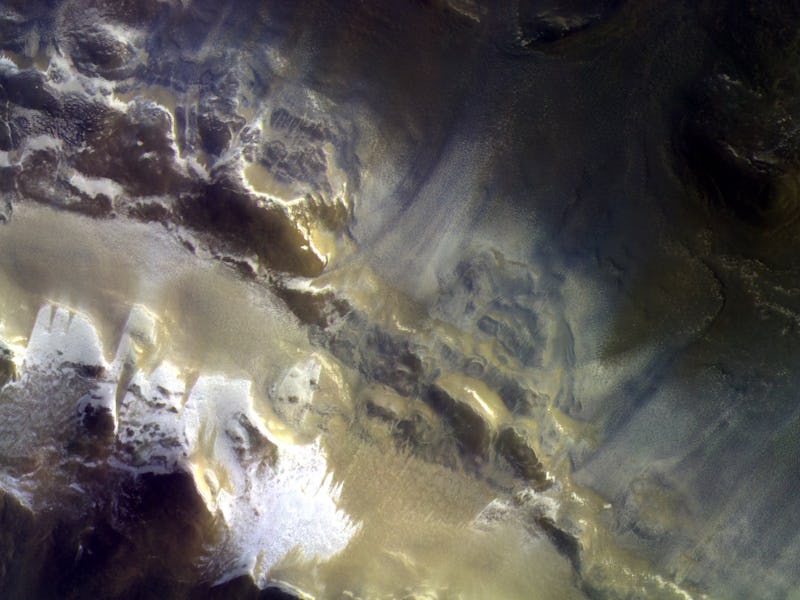The ExoMars Trace Gas Orbiter entered the Martian atmosphere in October 2016. Almost two years later, it’s finally maneuvered itself into a position to begin its two mission directives: Sniff out Mars’ atmosphere for some gnarly fart clouds and take some dope space pics.
The spacecraft achieved a nearly circular orbit, roughly 249 miles (400 kilometers) above the red planet’s surface, the perfect altitude to begin probing the planet’s atmosphere for signs of methane, the same gas humans release after one too many tacos. But before it starts probing for stinky gas, scientists at the European Space Agency and Roscosmos tested out the orbiter’s Color Stereo Surface Imaging System (CaSSIS). The result was an absolutely stunning panoramic shot of a 25 mile (40 kilometers) segment of the Korolev Crater located high in the planet’s icy northern hemisphere. The image was created by merging three images of different colors taken on April 15.
The ExoMars Color and Stereo Surface Imaging System, CaSSIS, captured this view of the rim of Korolev crater on 15 April 2018. The image is a composite of three images in different colors that were taken almost simultaneously.
Join our private Dope Space Pics group on Facebook for more strange wonder.
“We were really pleased to see how good this picture was given the lighting conditions,” Antoine Pommerol, a member of the CaSSIS science team working on the calibration of the data, says in a statement. “It shows that CaSSIS can make a major contribution to studies of the carbon dioxide and water cycles on Mars.”
Aside from this sweet space camera, ExoMars has a spectrometer onboard that it will use to scan the molecules in the Martian atmosphere. Distinct gases absorb sunlight differently, this provides the orbiter with a unique fingerprint for each of the chemicals in encounters. It’s going to be specifically looking for evidence of methane and carbon dioxide, which could be signs of active geological or biological activity taking place on Mars.
The orbiter will be able to quickly beam data from the images it takes and gases it detects back to scientists on Earth. From there they will try to characterize features on the surface that may be related to traces of certain chemicals in the atmosphere.
This ExoMars mission is expected to last roughly five more years. So get ready for some more eye-popping images of the red planet — this orbiter is just getting started.
